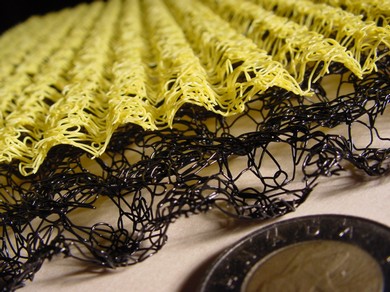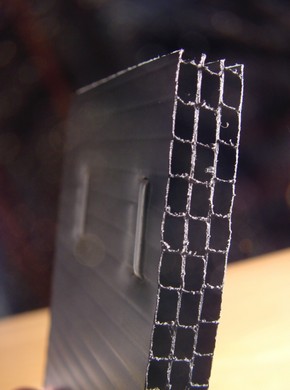If it were true that success was always about doing the obvious, then everyone would get everything right all the time. But sometimes subtleties rule, and that’s certainly the case when it comes to ventilation and the installation of durable wood siding. The fact is, for wood siding to reach its full potential you’ve got to understand important facts that are so obscure many builders never address them. What you’ll learn here are details that offer improved performance for any new home or addition that’s clad in wood.
Standard Siding Practice
Standard siding practice usually involves nailing boards or wood shingles tight against the plywood or oriented strand board (OSB) sheathing on the outside of stud frame walls. This is done all the time, and at first glance it seems fine. But that’s only true because so few people get a chance to see behind the siding as it ages.
If you could peek back there, you’d find two problems, and both cause tight-to-the-wall wood siding to perform far below potential. The good news is that these problems can be solved with knowledge about the need for back-of-siding ventilation and the products designed to deliver it.
Soggy Wood Siding
Despite appearances, wood siding isn’t always very good at keeping out rain. In fact, it rarely is completely weatherproof.
I was introduced to this little-known fact nearly 20-years ago when I built a storage shed:
- It has horizontal wood siding nailed directly to wall studs, with no interior insulation or wallboards.
- Every time a driving rain pelts down, the inside face of those wall boards get sopping wet as water sneaks up between the boards by wind-assisted capillary action.
- The shed couldn’t be wetter inside if I’d hosed the walls down. That’s not a problem in this case because the interior walls are open and the building is well ventilated. Besides, it’s just a shed.
When water gets behind wood siding on a house, and there’s no ventilation space to encourage drying, the result is:
- Peeling paint
- Cupped boards
- Shorter-than-ideal siding life
This is a big problem when you’ve paid thousands of dollars for a new home or addition. Even in those rare cases when wood siding is perfectly sound and weatherproof, there’s still the porous nature of wood itself. As wood soaks up water, it tends to permeate the board right through. If no opportunity is offered for the back face of the siding to dry along with the front, then moisture-related problems can still emerge.
Ventilation
Although it’s always been possible to create ventilation channels behind siding using wood strapping, several simple building products now make the job easier and the results much more certain. Cedar Breather and Cor-A-Vent are two options. I’ve looked into them and find they work in different ways, both ideal for different situations.
 Cedar Breather (www.benjaminobdyke.com)
Cedar Breather (www.benjaminobdyke.com)
- A non-woven, three-dimensional nylon mesh that’s flexible enough to be rolled, yet rigid enough to hold wood siding, shakes and shingles away from underlying wall and roof sheathing.
- You staple the product in place, then install wood over top.
- The American manufacturer offers a similar product, called Home Slicker, that’s designed exclusively for walls, though it’s not as readily available in Canada.
- A 250 sq. ft. roll of the dual-purpose Cedar Breather costs $145 and is available most readily in Ontario from Roofmart (800-387-2560).
 Cor-A-Vent (www.cor-a-vent.com)
Cor-A-Vent (www.cor-a-vent.com)
- A rigid, corrugated plastic product that’s designed to create a strong, nailable, and breathable anchor strip along the top and bottom of wall siding.
- It’s ideal for use with back-of-siding strapping, wherever it’s necessary to create full-supported ventilation channels along the top and bottom of the wall.
- Although Cor-A-Vent has no Canadian distributors, the company ships directly to us here.
- One of the best parts of the Cor-A-Vent website is the free downloadable installation drawings. Even if you don’t intend to buy the product, take a look for design ideas on how to make successful back-of-siding ventilation happen. It’s a subtle detail, but well worth the trouble.